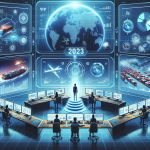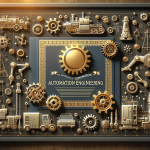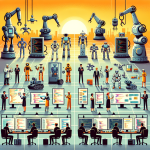The Intersection of AI and Cybersecurity: New Challenges for Analysts
In an age where technology pervades every aspect of our lives, the fusion of artificial intelligence (AI) and cybersecurity presents both groundbreaking opportunities and formidable challenges. As organizations increasingly integrate AI into their cybersecurity protocols, analysts find themselves navigating a complex landscape where the tools designed to protect are also being weaponized.
The Role of AI in Cybersecurity
AI has transformed the cybersecurity domain by enhancing the capabilities of threat detection, response times, and analysis. Machine learning algorithms sift through vast amounts of data to identify patterns indicative of potential threats. These technologies have enabled proactive threat hunting, automated responses, and the prioritization of security incidents, ultimately helping analysts to mitigate risks before they escalate.
Applications of AI in Cybersecurity:
-
Threat Detection: AI-driven systems can identify unusual patterns in network traffic, pinpointing anomalies that may indicate a breach or attack.
-
Incident Response: Automation reduces the reaction time to security incidents, allowing quicker containment and remediation.
-
User Behavior Analytics: Machine learning models analyze user activities to detect deviations that could signal insider threats or compromised accounts.
- Predictive Analytics: AI helps anticipate potential threats by analyzing historical data and emerging trends, enabling organizations to stay ahead of cybercriminals.
Emerging Challenges for Analysts
While AI presents numerous advantages, it also poses several challenges that cybersecurity analysts must confront:
1. Evolving Threat Landscape
Cybercriminals are increasingly using AI to enhance their own attacks, creating a cat-and-mouse dynamic. Phishing schemes powered by AI can generate highly personalized messages that are difficult to detect. Moreover, adversaries can employ machine learning to adapt their strategies in real-time, making traditional defenses obsolete.
2. Data Overload
AI systems generate extensive amounts of data that can overwhelm analysts. The sheer volume of alerts and information can lead to “alert fatigue,” where important threats may go unnoticed amidst false positives. Analysts must be trained to filter through this noise effectively, focusing on actionable insights rather than drowning in data.
3. Bias in AI Models
AI systems are only as good as the data used to train them. If datasets contain biases, the models may produce skewed results, leading to poor decision-making. Analysts need to scrutinize AI outputs and apply critical thinking to ensure that biases do not compromise the integrity of the cybersecurity framework.
4. Skill Gaps and Continuous Learning
As AI continues to evolve, analysts must stay abreast of new technologies and trends. The rapid pace of change necessitates ongoing education and training to effectively leverage AI tools. Organizations face the challenge of cultivating a workforce that is not only proficient in the latest cybersecurity technologies but also skilled in AI methodologies.
5. Ethical Considerations
The extensive use of AI in cybersecurity raises ethical questions regarding privacy, surveillance, and consent. Analysts must navigate the delicate balance between effective security measures and the rights of individuals. Establishing clear guidelines and policies is crucial for fostering trust while ensuring robust security.
Strategic Responses for Cybersecurity Analysts
To effectively address these challenges, cybersecurity analysts must adopt a multifaceted approach:
-
Continuous Education: Organizations should invest in training programs to enhance analysts’ understanding of AI technologies and their implications.
-
Integrating Human Insight: While AI can automate many tasks, the human element remains essential. Analysts should complement AI insights with their expertise to make informed decisions.
-
Developing Robust Protocols: Establishing protocols for evaluating AI system outputs can help analysts distinguish between credible alerts and false positives, reducing the risk of oversight.
- Fostering Interdisciplinary Collaboration: Collaboration between data scientists, AI experts, and cybersecurity practitioners can create a more holistic approach to threat detection and response.
Conclusion
The intersection of AI and cybersecurity presents a dual-edged sword, offering innovative tools while introducing new challenges for analysts. As threats evolve and data becomes increasingly complex, cybersecurity professionals must adapt their strategies and continuously hone their skills. By embracing a proactive, informed approach, analysts can leverage the power of AI to not only defend against cyber threats but to shape a safer digital landscape. The journey ahead may be intricate, but with vigilance and adaptability, the cybersecurity community can rise to the occasion.




